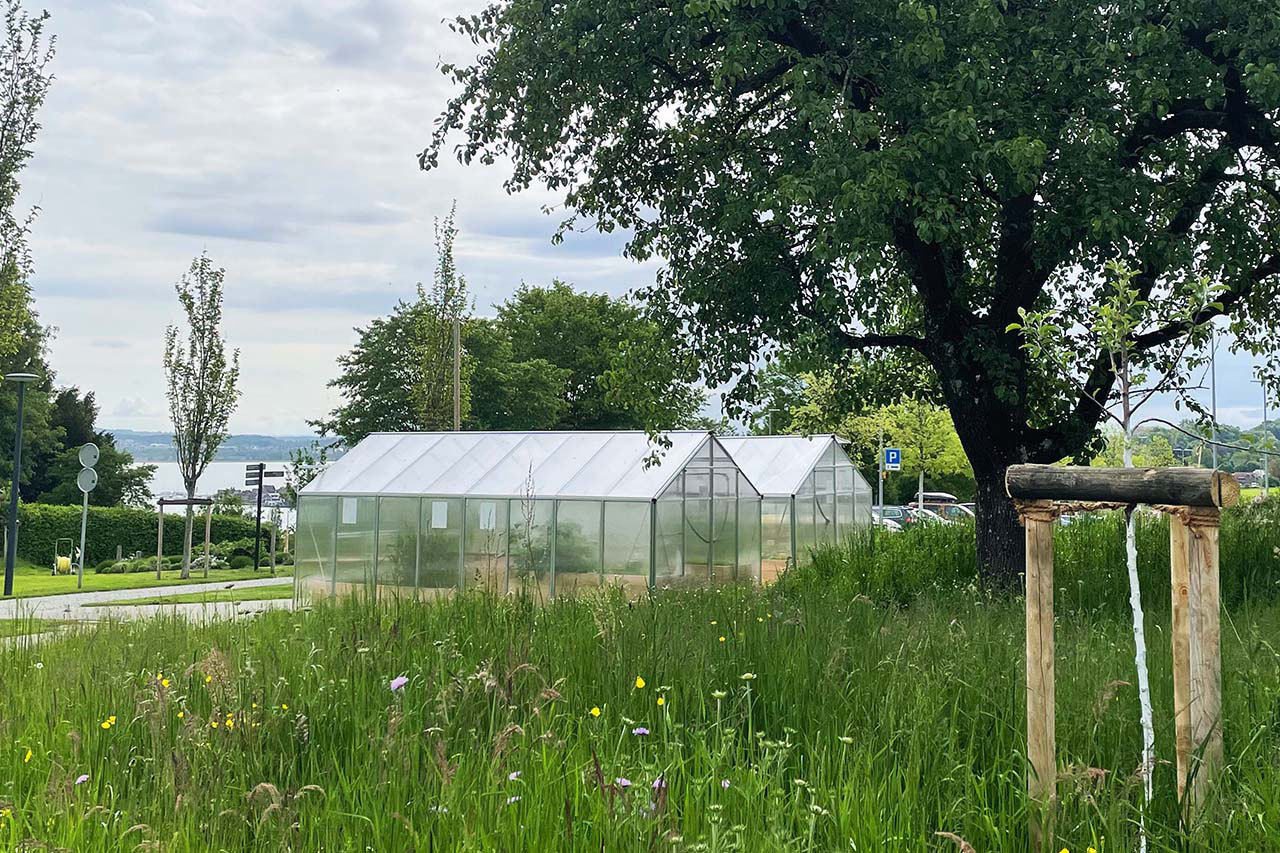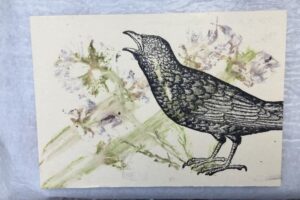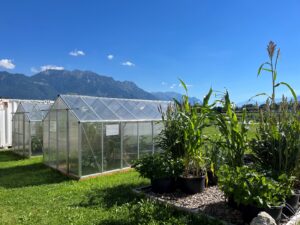From April to October 2023, the Arenenberg hosted the Climate Garden 2085 project on an open space at the western end of the park next to the school grounds, focussing on the effects of climate change on native arable, vegetable and berry crops.
Two greenhouses cultivated the same vegetable and arable plants, but with two different simulated climate scenarios:
While one greenhouse represented the conditions expected if greenhouse gas emissions were reduced by at least 50 %, the other greenhouse simulated the climate in 2085 as it is expected to be without additional climate policy measures as global warming progresses.
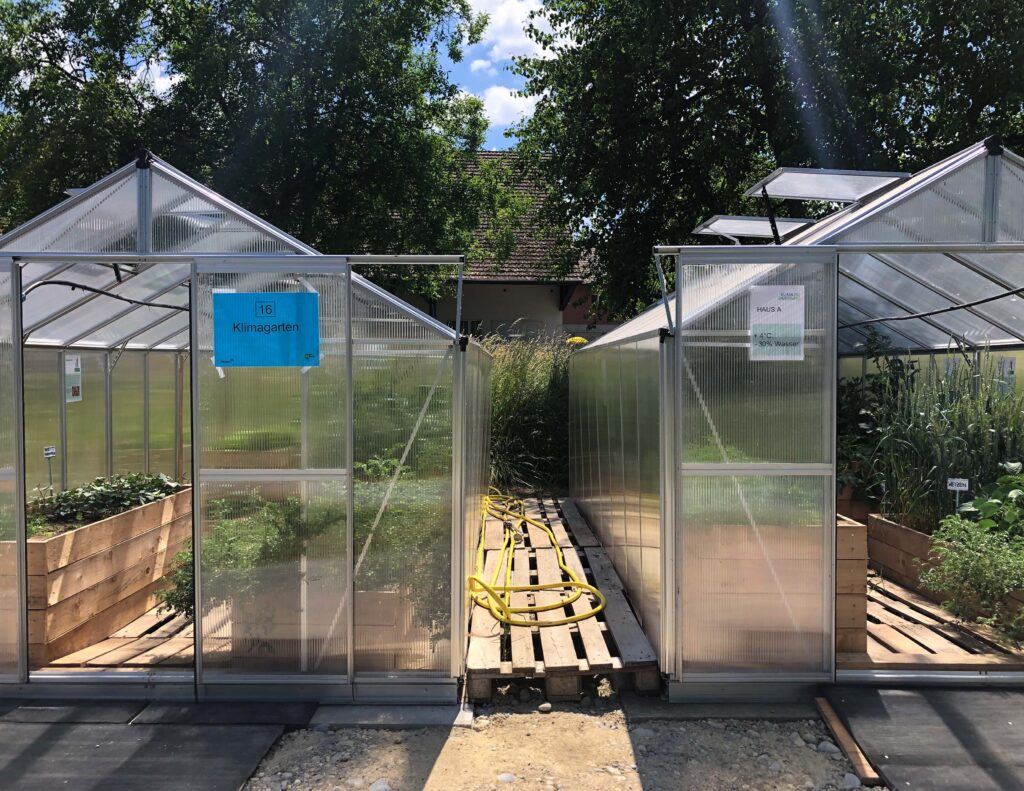
In June 2023, 100 vocational students from BBZ Arenenberg took part in the two workshops “Plate of the Future” and “Agriculture of the Future”. These workshops convey occupation-specific climate scenarios and options for action.
The workshops are being developed as part of the FOEN-funded climate programme in collaboration between scientists from the Plant Science Center and the Swiss Federal Institute for Vocational Education and Training. One aim of the project is to further develop climate education programmes for vocational schools and professional associations with a focus on new and holistic learning formats for learning and testing knowledge for action (Education for Sustainable Development, ESD).
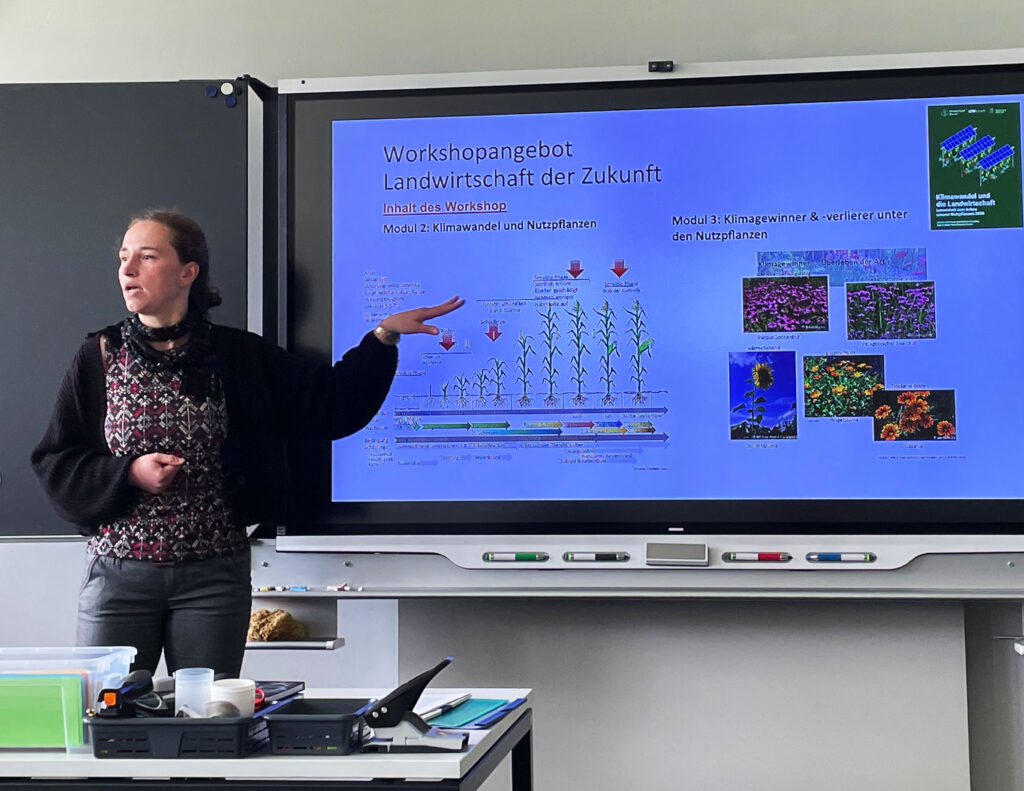
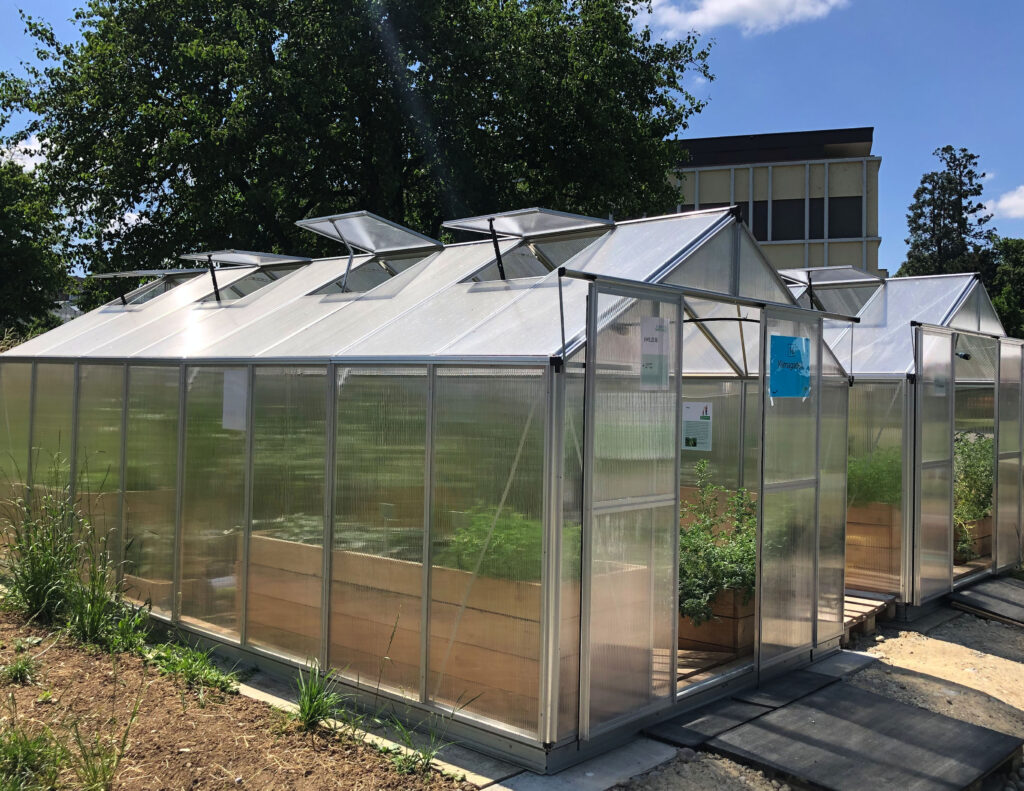
On Arenenberg Day 2023, all areas from the school and experimental farms to the hotel industry and culture to the two greenhouses of the Climate Garden 2085 opened their doors to the general public.
The PSC staff guided visitors through the two greenhouses, providing a fascinating insight into the simulated climate scenarios of the future. They were on hand to answer visitors’ questions, explain the background to the project and help them develop a deeper understanding of the challenges posed by climate change.
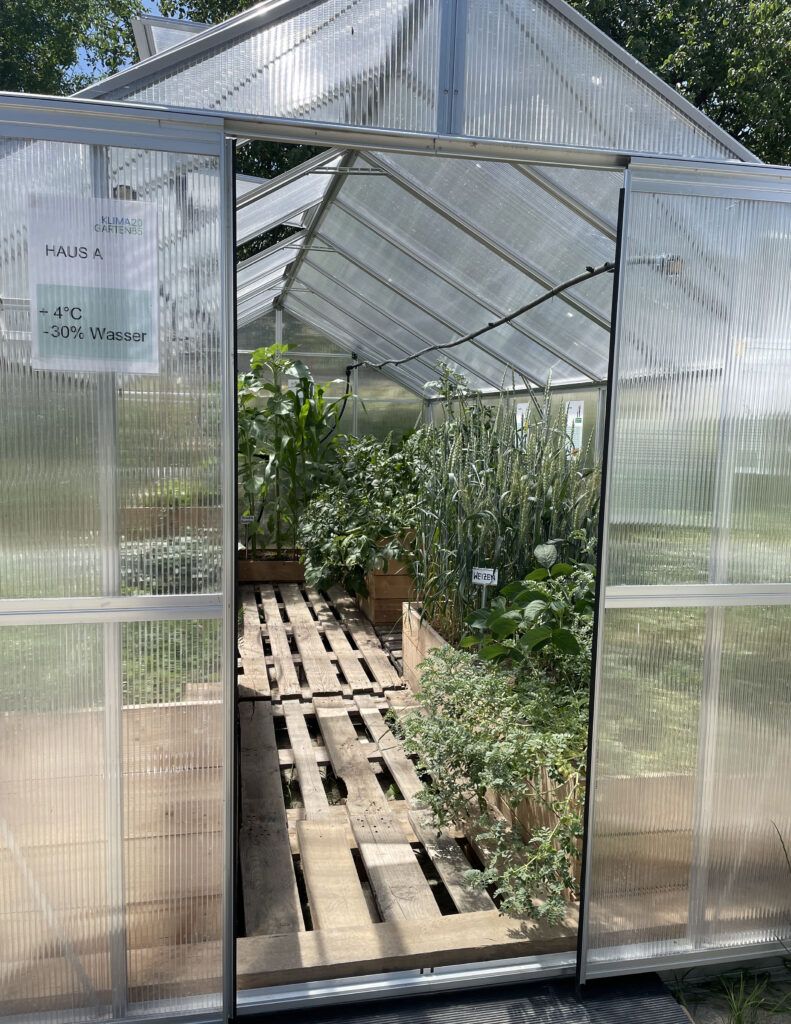
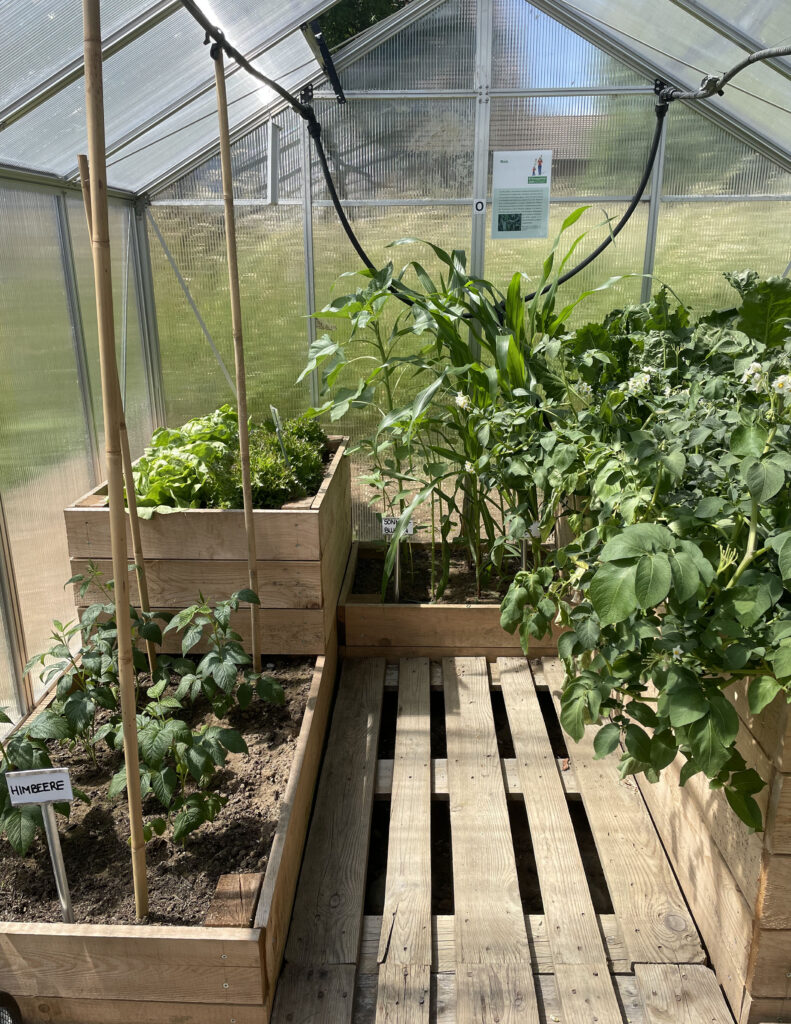
This open day is not only aimed at adults, but also at younger guests. At the climate garden, children and young people were able to use cyanotype, a photographic printing technique using sunlight, to visualise the structures of plants in their own blue and white pictures. This creative and interactive approach enabled the youngest visitors to explore the climate garden in a playful way.
In bright sunshine, many families took advantage of this Sunday in June for an educational and entertaining excursion. The Climate Garden 2085 at Arenenberg proved to be a lively and informative experience for all age groups, which not only imparted knowledge but also raised awareness of the urgency of taking action in the face of climate change.
The PSC has developed a series of other plant science experiments for young people and the interested public that can be quickly explained and implemented: Link to the book and the experiments (only in German).
Instructions for the experiment Recognising plant structures with cyanotype Pflanzenstrukturen mit Cyanotypie erkennen (PDF, 6 MB) (only in German)
Text translated from German.


